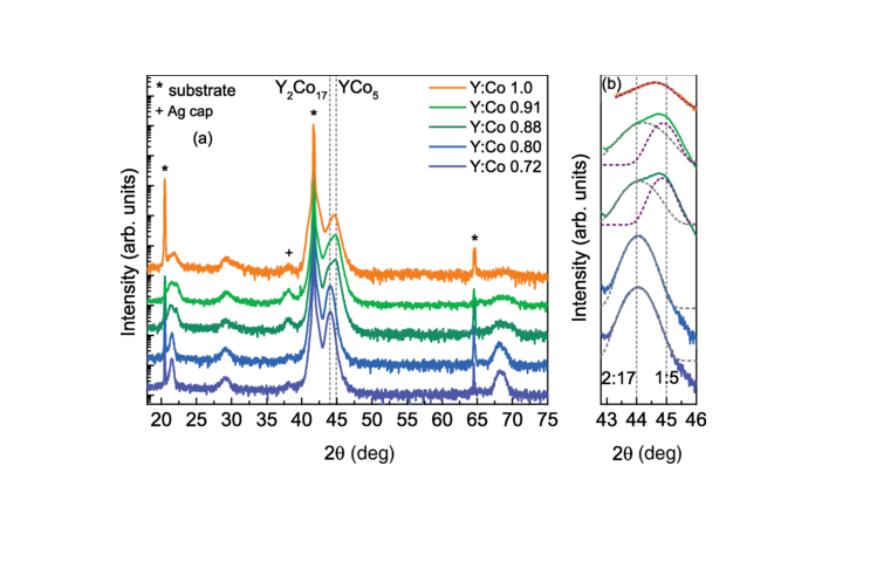Induction of uniaxial anisotropy by controlled phase separation in Y-Co thin films
2020/09/30

Phys. Rev. B, 102, 014435 (2020).
S. Sharma, D. Ohmer, A. Zintler, M. Major, I. Radulov, U. Kunz, P. Komissinskiy, B. Xu, H. Zhang, L. Molina-Luna, K. P. Skokov, L. Alff.
In this study, molecular beam epitaxy is utilized to stabilize a nanostructured thin-film magnet consisting of a soft magnetic Y2Co17 exchange coupled to hard magnetic YCo5. While, typically, a phase decomposition can be obtained in rare-earth cobalt systems only by the addition of further elements like Cu, Fe, and Zr and complex heat treatments, here we directly induce phase separation by growth kinetics. The resulting nanoscale architecture, as revealed by cross-sectional transmission electron microscopy, is composed of a network of coherently interlinked and aligned Y2Co17 and YCo5 building blocks. The formation of coherent precipitations is facilitated by the perfectly matching lattice constants, atomic species, and crystal symmetry of the two phases with vastly different magnetocrystalline anisotropies. The hard magnetic phase induces an aligned uniaxial anisotropy in Y2Co17, resulting in substantial coercivity associated with enhanced energy products. This work highlights the importance of thin-film epitaxy in understanding magnetic hardening mechanisms and suggests strategies for a rational design of future sustainable magnetic systems.
DOI: 10.1103/PhysRevB.102.014435



